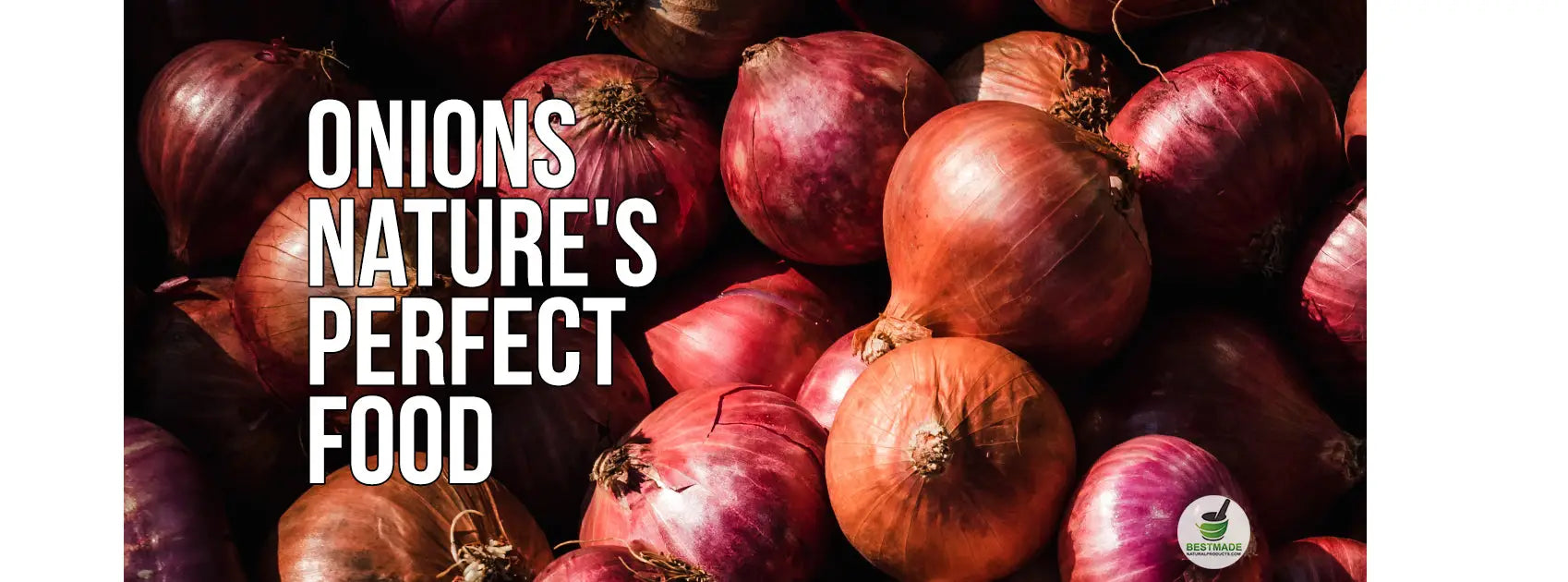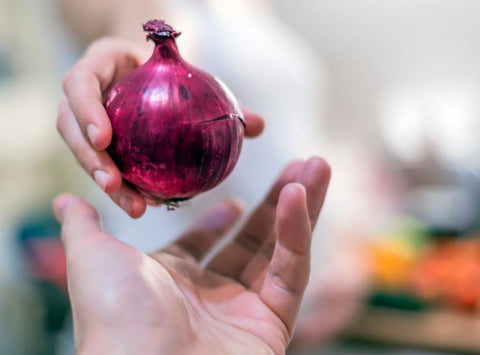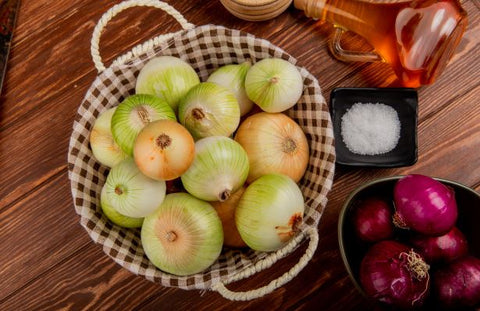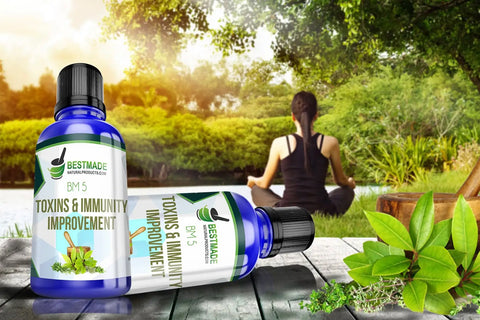
Nature's Perfect Food and Health Benefits: Onions
Onions have a long and healthful history as they are eaten throughout the world. They are full of flavor, come in many colors and textures, and can be used in just about any dish that needs extra flavor and loads of nutrition. While onions don’t have the reputation of being a “superfood,” they are actually extremely good for you.

Onions are the 3rd most common vegetable purchased and eaten in the US. Perhaps this is because you can get onions at any supermarket and they are available throughout the year.
They can be as small as just under an inch in diameter to more than 4 ½ inches in diameter. You can buy onions in several colors, including white onions, yellow onions, and red onions. Green onions are also an essential plant food for good health, as are shallots.
Nutritional Facts And Health Benefits Of Onions
- Onions are a great fiber source and are high in vitamin C
- They contain very few calories—only about 45 calories a serving (one cup)
- They are free of cholesterol, fat, and sodium
- Onions are the perfect source of calcium, iron, magnesium, phosphorus, potassium, and zinc
- As for vitamins, they are high not only in vitamin C but contain a significant amount of folate and Vitamin B6.
- The bright green tops of green onions are rich in Vitamin A
- Contain phytochemicals to boost immunity
- The chromium in onions helps to regulate blood sugar levels
- Onions have been used for thousands of years to heal infections and reduce inflammation
- Raw onions help to lower bad LDL cholesterol for smart heart health
- Onions contain a compound called quercetin which is believed to play a significant role in cancer prevention
- Onion juice helps relieve the pain and burning from a bee sting
A study from Cornell University found that out of the eleven varieties of onions studied, shallots and Western yellow onions were the healthiest as they contain the most phenolic and flavonoid content.
History Of Onions
No one knows the exact origins of onions. They are believed to have been initially used in ancient times in central Asia. Other research indicates that onions have their origin in West Pakistan and Iran.

The use of onions is thought to date to prehistoric times—as many as 5000 years ago. They evolved over time so that, today, onions are everywhere and they have many different varieties. There is evidence that they were used in most ancient cultures as they were easy to store and transport.
Onions Today
Today’s onions have a variety of colors, sizes, and flavors. There is an onion for just about every person’s taste. As mentioned, they can be white, red, or yellow, although most onions (87 percent) are yellow onions. White onions are rarer, representing about 5 percent of all onion colors. Leeks, green onions, and shallots can be used in a wide variety of tasty ways and dishes.
- Yellow onions can be used in any recipe. They turn brown when cooking and are often used in French onion soup
- Red onions are great grilled and sautéed, and are excellent in raw form in salads. They turn very sweet when grilled or sautéed
- White onions turn very sweet when sautéed, and go great in sauces and salads. Green onions add flavor to vegetables, potatoes, rice and taste great when grilled
- All onions make great additions to sandwiches and burgers
- Leeks make a great soup
Onions Can Be Found Year-Round In Supermarkets
In the spring and summer, the skin tends to be lighter and thinner, with a high water content.
Spring onions are more likely to bruise and are usually of a mild to sweet flavor.
Fall onions have several layers of dark, desiccated skin. They have a longer shelf life than spring and summer onions, and often have a mild to pungent flavor. They take longer to cook than spring and summer onions.
Selecting Onions
When selecting onions, look for an onion that is firm and has very little odor. Stay away from onions that have blemishes on them, are bruised, or are disrupted in any way. Choose an onion that doesn’t show evidence of being dehydrated in its outer skin. Make sure the onion’s expiration date has not been passed.

Cutting Onions
Believe it or not, there is a right and wrong way to cut up onions. You need to first cut off the stem and peel its outer layers so you are down to the “meaty part” of the onion. Then cut the onion in half. If you are dicing onions, you need to take each onion half and make several longitudinal cuts so the onions are sliced. Then cut at a 90-degree angle to the first cuts and chop these further until you have both halves perfectly diced.
Preparing Onions
Onions can be made in several different ways. You can use them uncooked in salads, sauté them to be used along with meats, boil them for casseroles, grill them, roast them, or caramelize them. They are the perfect food as they enhance the flavor of just about any food you choose to mix them with.
Storing Onions
Make sure you store them in a dark place that is both cool and dry. The storage area should be well ventilated. Store them open to the air and avoid storing them in plastic. They survive the longest in the refrigerator but you can store them in a drawer that is dark and that allows for air movement around the onions.

If you store them in the refrigerator, use a low humidity setting so they don’t get mushy. They can be sealed in a plastic container after dicing or slicing and will last for as many as seven.








Leave a comment